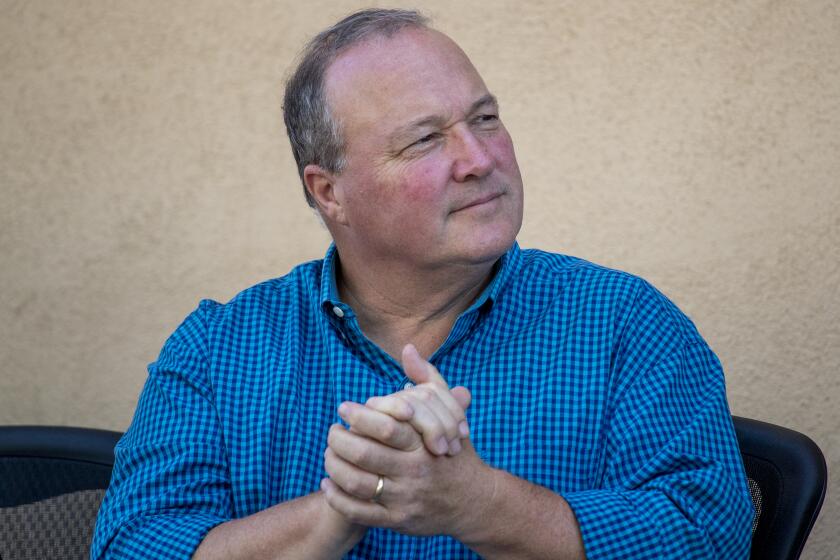Candidates go Code Blue on healthcare
‘HillaryCare Redux,” sneered Rudy Giuliani’s campaign on the day Hillary Clinton announced her new proposal for universal healthcare. “It’s enough to make you ‘Sicko.’ ” Fred Thompson’s folks, working off the same playbook, said it’s “enough to make you sick.” Mitt Romney offended St. Vincent’s Hospital in New York by using its building as a backdrop for his own hasty assault on the plan he probably hadn’t read.
Smears without substance are bad enough, but smears without substance that use bad puns merit a special circle in hell. So all in all, the Republican respondents didn’t exactly cover themselves in glory here.
But now that the major candidates from both parties have offered plans for reforming American healthcare (the exception being Thompson, whose campaign has elevated a bored disengagement with substantive policy matters into a sort of avant-garde political aesthetic), it’s worth taking a more sober look at what the candidates are promising to do about the issue Americans rank as their most important domestic priority.
The task is eased by the fact that the two political parties have largely converged on distinct diagnoses of what the system’s problems are and what reform would look like.
The plans offered by the Democrats differ in details and ambition but diagnose the problem in basically the same way: Not enough people have health insurance, and the fragmented, patchwork nature of our system for obtaining coverage leaves us to the not-so-tender mercies of insurers that have their best interests, rather than ours, foremost in mind.
The reforms flow naturally from that point. Clinton and John Edwards both propose an “individual mandate” to ensure universal coverage. Under their systems, every American would have to purchase health coverage, and a system of subsidies and tax credits would be constructed to make sure coverage was affordable. Barack Obama would channel healthcare through employers to the employed, but he doesn’t build in mechanisms to ensure that adults outside the labor force are covered.
All three engage in substantial reform of the insurance market aimed at broadening the risk pool. If their plans are adopted, insurers would no longer be able to refuse coverage (or charge higher rates) based on preexisting conditions. They would have to cover anyone who seeks coverage and charge them a price based on the average member of the community, not on a complex underwriting formula that seeks to determine future health costs by running opaque equations that can disqualify someone for coverage because they used allergy medicine in the past. Insurers no longer would be able to profit by separating out the young and healthy from the old and sick, thus sectioning the market into those worth insuring and those not worth insuring.
The hope is that these changes would force insurers to compete based on the cost and quality of the policies they provide rather than who has the best underwriting team.
If that hope falls flat, however, all of the Democrats offer up another option: a government-run insurance program modeled on, but distinct from, Medicare. In health policy circles, one of the primary debates is how much distortion the profit incentive inserts into health insurance. “How can my insurer best pay for my medical care?” is a different question from “How can my insurer best profit off of my need for medical care?” The Democratic plans essentially let the market decide. There will be a public insurer for those who want it, and if people feel that it provides better service, the private insurers will either have to adopt similar techniques or go out of business.
The Republicans are taking a very different approach. Their plans all proceed from the assumption that the problem in healthcare is that costs are skyrocketing because Americans overuse their doctors. This theory postulates that because Americans don’t feel the cost of every individual treatment (because it is being paid by insurers and the premiums are being paid by employers), they demand more treatment than they actually need, spending too much and lifting the price of healthcare. The answer to this problem is simple: Make us pay for care directly rather than for premiums.
Giuliani’s plan -- though it’s such a mild tweak as to hardly qualify as a plan, and he doesn’t even list it, or healthcare, on his campaign website’s “issues” page -- attempts to do this by creating a fixed tax exemption for health insurance of $7,500 for individuals and $15,000 for families. Don’t get too excited by the numbers; this is a tax exemption, not a check, so the real value of the help he’s offering never exceeds a couple of thousand dollars (and for many individuals who already have low tax burdens, it amounts to nothing at all).
The hope is that this will give more Americans an incentive to buy their own healthcare, and in order to keep the maximum amount of the tax benefit (which is, remember, fixed), they will purchase cheaper plans that offer lower premiums and higher deductibles -- and thus introduce more price sensitivity. In other words, Giuliani proposes to fix healthcare by setting up a system to encourage Americans to buy less of it.
Romney’s plan is more interesting and more serious. In Massachusetts, he signed into law a universal healthcare plan much like what Clinton and Edwards have offered. It included an individual mandate, a new institution called “the connector” that would help regulate insurers, and much more. But the Republican primary races require the courting of an electorate quite different from Massachusetts’, so the Romney campaign has backed away from that plan.
His campaign offering is significantly less comprehensive and much more conservative. He’d begin by doing away with state regulation of insurers -- regulation that has forced insurers across the country to cover such frivolities as maternal healthcare. This would allow insurers to offer much cheaper, sparser plans that would be very good for the healthy to buy and very bad for the sick as their plans grew correspondingly more costly. He would expand the use of health savings accounts -- high-deductible plans in which premiums are lower but much more care is paid for out of pocket -- so that individuals pay directly for much more of their healthcare costs. And he would make those costs deductible.
On each side, the plans are basically united. The Republican plans make you pay more for your healthcare so you’ll buy less. They do this by weakening the protection that insurance offers from health expenses. The Democratic plans bring everyone into the system, then use that leverage to reform the insurers and extract savings through efficiencies of scale.
Thompson, who doesn’t have a plan, says that “the best way to improve the best healthcare in the world, which is what we’ve got right here in the United States, is to expand choice.”
And that indeed is where the plans differ: the type of choice they offer. The Republican plans make it easier to choose to forgo health coverage or to buy less of it. The Democratic plans make it easier to buy comprehensive health insurance. And the voters will have to choose between the two.
Ezra Klein is a staff writer at the American Prospect. He blogs at EzraKlein.com.
More to Read
Get the L.A. Times Politics newsletter
Deeply reported insights into legislation, politics and policy from Sacramento, Washington and beyond. In your inbox three times per week.
You may occasionally receive promotional content from the Los Angeles Times.










